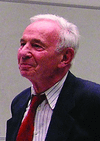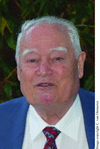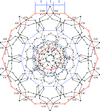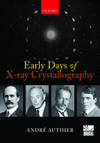issue contents
May 2016 issue

Cover illustration: In this issue the geometrical structural relations in axial symmetric proteins, B-DNA and icosahedral viruses are discussed in a series of three articles by the late Professor A. Janner (1928-2016). A coarse-grained modelling of the Pariacoto virus (PaV) using the projected points of a six-dimensional icosahedral lattice is shown [Janner, A. (2016). Acta Cryst. A72, 324-337].
advances
scientific commentaries

lead articles
foundations
obituaries


research papers
The maximum crystal size is determined for application of the Scherrer equation.
short communications
 access
accessinternational union of crystallography

book reviews




 journal menu
journal menu






































